 A rivalry between two schools in the Blue Valley School District has turned into a controversy over what is good clean fun and what is anti-Semitism. On Jan. 27, Blue Valley Northwest students performed a skit pre-approved by school officials that some Jewish students at BV North believe was anti-Semitic. Three weeks later the controversial skit was aired on television. Following the broadcasts social media sites, including Facebook, exploded with public comments.
A rivalry between two schools in the Blue Valley School District has turned into a controversy over what is good clean fun and what is anti-Semitism. On Jan. 27, Blue Valley Northwest students performed a skit pre-approved by school officials that some Jewish students at BV North believe was anti-Semitic. Three weeks later the controversial skit was aired on television. Following the broadcasts social media sites, including Facebook, exploded with public comments.
District officials, including the Superintendent Tom Trigg, Ed.D., have apologized for the skit.
“Please know that we are working extremely hard on this situation. On behalf of the district, I apologize that the situation occurred,” emailed Trigg to a Jewish parent who contacted him with concerns.
“You can assure [your child] that our administrative team is working to be sure this type of incident does not happen in the future,” he continued.
The skit
Students perform skits as part of Spirit Week activities before school at BVNW. Students attendance at these activities is optional. One of the skits on Friday, Jan. 27, featured junior boys — including one Jewish student — dancing the Hora. They sang “Hava Nagila” and then lifted one of the boys up — as they would at a Jewish celebration such as a wedding or Bar or Bat Mitzvah. The skit’s music was stopped during the assembly when administrators deemed it inappropriate. Many parents and students believe the dance was poking fun at BVN’s large Jewish population. It should also be noted that a Jewish student was in the skit and helped plan it.
According to an article titled “Spirit Week Dances Disqualified,” written by BVNW student Linley Sanders and posted to the BVNWnews.com website, the official school media of BVNW, Principal Amy Murphy, Ed.D., noted that the junior class skit was disqualified for Spirit Week prizes because it included anti-Semitic activities. (Excerpts of the article may be found below. The entire article can be found at www.bvnwnews.com.)
The video of the skit had also been posted on the BVNWnews.com website, but was taken down sometime Wednesday, Feb. 15, after students and parents in the Jewish community complained about it. Marvin Szneler, executive director of the Jewish Community Relations Bureau|American Jewish Committee, called the school district to relay the Jewish community’s concerns and their wish to have the video removed from the website.
“The school district told me they had to consult their attorney due to a Kansas freedom of the press act. They needed to get legal permission to take down the video that the students put up, which they did,” Szneler said.
Szneler is concerned that the public did not get the entire story if all they know is what they saw on the televised KSHB news report.
“When the video was on TV and in emails, it did not include the story noting that the dance was disqualified because it was anti-Semitic,” Szneler said.
In addition, BVNW’s Murphy said the KSHB news report incorrectly stated that the students changed the skit from what was approved in the first place.
Anti-Semitic tweets
Szneler originally discovered there was a problem between the students at the two schools when parents called him early last week to report anti-Semitic tweets coming from BVNW students. So he contacted district officials about the tweets.
“It is my understanding that the district called the parents and the students connected to the tweets and asked them to take them down. As far as I know, all the students complied with the request,” Szneler said.
Parents and students are also upset about a couple of BVNW students who did a Nazi salute while at a basketball game against BVN at BVNW in 2011. District officials told Szneler those students were immediately disciplined by administrators.
Szneler said the local JCRB|AJC continues to be concerned about incidents, particularly anti-Semitic remarks between students.
“I wish students would report these to the school and to JCRB|AJC, so that action can be taken. I am convinced the Blue Valley School District has a zero tolerance for this, and will take action to explain there are consequences for this behavior, and work to eliminate them,” Szneler said.
He’s also very concerned about social media, which is difficult to control.
“If the inappropriate rhetoric is diminished in the schools by the reporting of it, hopefully that rhetoric will decline in student social media as well,” he said.
Teachable moments
BVNW and the Blue Valley School District are taking steps to continue diversity education with students, including being respectful of individual differences, a district spokesperson said this week.
BVNW Principal Murphy said this week that she hopes they are now at a point where they can move forward.
“We are reviewing our processes and building bridges,” she said.
Murphy said a previously scheduled diversity activity took place on Thursday, Feb. 16. That activity leads up to the diversity assembly, which also was already on the calendar, and takes place March 1.
In addition, she said BVN and BVNW are making arrangements to have the schools’ newspaper staffs work together on a joint article about the importance of diversity. Plans are to publish the article in April because it was too late to accomplish this goal for the next edition of each newspaper, which publish this week. Neither school publishes an issue of the newspaper in March, due to spring break.
Murphy said administrators are still brainstorming other ways to build bridges, including coordinating a joint Uni-Town between the schools.
“It’s an opportunity to bring a small group of 50 kids together. It’s a lock-in and they spend about 24 hours together to work on stereotypes and breaking down the walls associated with stereotypes,” she explained.
The Uni-Town event would take place next year, possibly between football and basketball season.
“We want to do something immediately with the kids, but we think there’s an ongoing opportunity here to continue to educate our kids,” she said.
Murphy said BVNW has tried to find ways to turn this negative into a positive and find ways to grow from this. In that spirit, she is grateful that the community has reached out to support the school.
“We’ve had a longstanding relationship with the JCRB. Judy Hellman worked with us in the past as has Marvin (Szneler). They immediately have reached out to say how can we help you to plan some additional diversity activities, not just between North and Northwest, but in our entire community,” Murphy said.
Student reactions
Senior David Tauber became the face of BVN Jewish students when he was interviewed by KSHB on Wednesday, Feb. 15. However, he wasn’t the one who contacted the television station. As a member of the student newspaper staff, he was in the newsroom when the reporter requested a Jewish student to interview.
David thinks the television station treated him fairly, and he stands behind the comments used in the story.
“There’s always been a rivalry, hatred between Northwest and North, but when you turn to denigration, something’s not right,” David told KSHB. “Kids are upset about that.”
David told KSHB reporter Syed Shabbir that he was most upset about the video.
“They showed this off. They put this online. Their newspaper published it. They showed it off to everyone. They were proud of what they did. That’s the problem,” David said.
David described the day following the television interview as an “up and down day,” something he didn’t foresee before he spoke to the reporter. He discovered that many students at BVNW were angry about his comments and sent him hate mail.
“I think they are making much more out of it than it should be,” he said.
At his own school, David said he was treated with nothing but kindness from all the students — Jewish and non-Jewish.
There are students at both schools who feel the situation has been blown out of proportion.
“It was Northwest sprit week and it was supposed to be funny. We’re huge rivals,” said a BVN Jewish student who did not want to be identified. “If it was truly mean spirited, I don’t think the Jewish kids there would stand for it.”
“I think the Heil Hitler situation last year was much worse,” the student added.
Scott Altman, a sophomore at BVNW, said he’s heard disturbing things in the halls since the first television report aired. He believes it has “sparked more anti-Semitism.”
“The other day I heard a kid say a second Holocaust wouldn’t be such a bad thing right now,” Scott said. “I think some students don’t realize there are Jews at Northwest, or else they just don’t care.”
Hannah Dolginoff was one of the students interviewed by KSHB for the second story which aired Feb. 16. She told reporter Zach Techlenburg that while the skit may have gone too far, her school is one of acceptance.
“I’m Jewish … and in my four years here, I’ve never once been offended by anything my peers have ever said or done,” Hannah said.
Disturbing slurs
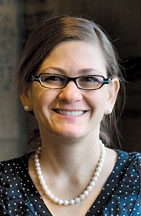 The situation was really becoming a hot topic last Wednesday night and spurred a discussion in a class taught by Rabbi Vered Harris at Congregation Beth Torah. The class includes students at a variety of schools, not just BVN and BVNW.
The situation was really becoming a hot topic last Wednesday night and spurred a discussion in a class taught by Rabbi Vered Harris at Congregation Beth Torah. The class includes students at a variety of schools, not just BVN and BVNW.
“Most disturbingly students shared slurs and threats they have heard at school and school functions. The statements they reported include things like: ‘You should have all burned in the ovens,’ Heil Hitler’ (with a Nazi salute) and ‘You’re a Jew’ (in a derogatory tone),” Rabbi Harris said.
She is concerned that all of the students in the room were aware of such hateful language and actions, but none of them said they had ever reported it to teachers or administrators.
As Szneler of the JCRB|AJC noted earlier, she urges students and parents to report these slurs and actions.
“The Blue Valley School District does not know about the vast majority of incidents our students have experienced because our children mostly either ignore the statements or decide to handle it on their own,” Rabbi Harris said.
“School districts and JCRB|AJC being made aware of problems can help determine strategies to take in combating ignorance and raising expectations,” she continued. “Remember the Blue Valley motto is ‘Education Beyond Expectations.’ Perhaps you agree with my expectation that our children’s education include both tolerance and respect.”
The parental view
BVN parent Sandi Fried is upset that BVNW students have mocked the Jewish population at BVN two years in row. She finds that absolutely inexcusable.
Linda Sander, the parent of a BVNW graduate and current student, said the dance and the situation that developed around it upsets her on many different levels.
“However, neither of my children have had any problems at the school. It is a great high school where my kids feel at home and received a rewarding education. Unfortunately, a few can make a negative impression on the whole,” Sander said.
Rabbinic voices
 At least two other rabbis have commented publicly about the matter. Rabbi Alan Cohen, interim rabbi at Congregation Beth Shalom, said in a KSHB news story Thursday, Feb. 16, that he believes the dance was meant to be light hearted.
At least two other rabbis have commented publicly about the matter. Rabbi Alan Cohen, interim rabbi at Congregation Beth Shalom, said in a KSHB news story Thursday, Feb. 16, that he believes the dance was meant to be light hearted.
“More often than not, from these kinds of experiences that have occurred it’s usually done out of ignorance, done out of insensitivity,” Rabbi Cohen said.
He hopes this can be a learning experience for the students.
Rabbi Arthur Nemitoff of The Temple, Congregation B’nai Jehudah, appeared on KSHB’s midday newscast Friday, Feb. 17. He also sent an email to the Reform congregation’s members on Friday afternoon. In it he stated:
“I believe that the skit — as innocent as it may have been intended to be — was at best ill-conceived, ignorant and naive. And regardless, it exposed the ugly underbelly of a problem in our community.
“I wish to be clear: this is NOT about BVNW or BVN. It is about our community and how we treat and talk with one another.”
He wrote that he doesn’t believe anti-Semitism is running rampant in the Kansas City area.
“However, these issues exist because there is a lack of sensitivity and understanding within the community … Some have dismissed the video as ‘merely’ trash talk. However, trash talk is equivalent to trashing someone’s personal faith or culture ... and we would hope that no one would approve of that.”
He believes the local school districts are getting mixed messages from the Jewish community.
“Plenty of Jewish students have said this is no big deal. Some have said that they talk that way about themselves so why shouldn’t others. On the other side, some students have been very upset and feel that they themselves have been attacked. So, part of the responsibility lies with us, ourselves,” Rabbi Nemitoff said.
He encourages members of his congregation to model the values of holiness and common decency.
“May each of us model these values for others, and not engage in ‘trash talk’ about ourselves or about others,” he said.
He suggests parents communicate respectfully and clearly with school administration whenever someone “talks trash” about any individual and/or their unique culture or faith.
The Reform rabbi said congregants should be proud of their own culture and faith. He also believes it’s OK to continue to support one’s school and promote healthy, friendly competition.
“But, take care to recognize that words and actions hurt in ways that are often difficult to reverse,” Rabbi Nemitoff said.
Excerpts from BVNW Spirit Week article
An article in the Blue Valley Northwest student newspaper reported that three dances were disqualified from earning Spirit Week prizes. One was the dance causing controversy in the Jewish community performed by a group of junior class boys. The following is excerpts from the article “Three Spirit Week Dances Disqualified,” reprinted by permission from Blue Valley Northwest High School.
“Our hope is, if [a dance is] too inappropriate, we’re going to cut it,” [Principal Amy] Murphy said. “Probably, on Friday, we should have cut the juniors…”
Junior Zach Somberg, a participant in the dances [who is Jewish], said in the article that the intention of the dance was purely humorous, but in retrospect, the group recognizes they made a poor decision.
“Our intent was not to point at Jewish culture, but more to point at North, but in pointing at North, we pointed at Jewish culture,” Somberg said. “We made a poor decision on a touchy subject, and we apologize to anyone we offended at North or Northwest.”
Another member of the dances, junior Oliver Graham, said the group was not trying to offend anyone with the dance, but wants to apologize to the students and school if they did.
“Looking back, I can see how it would be offensive, and I wish we would have thought about it more, but at the time we just kind of went with it and made a poor decision,” Graham said.
Murphy said class sponsors are the people directly responsible for approving the dances after students create them. She said she did not see the version of the junior’s dance that was practiced, despite being near where the dance was being shown to junior class sponsor Erin Pearson.
“I think they thought I saw it when they were showing [Pearson],” Murphy said. “The problem was I was running in and out… and I wasn’t paying any attention, and I’m kicking myself now because had I stopped and watched it, I would have said, ’You can’t do that.’”
According to Somberg and Graham, the version of the dance that the juniors performed for spirit week was the same one they showed Pearson for approval. Somberg said he believes she did not realize the full implication of the dance, and does not blame her for it getting approved.
He said the juniors were prepared for that part of the dance to not be approved by their sponsor, but added that they should not have included it in the first place.
Pearson was approached to comment on the events, but refused to comment on why she approved the dance.
Murphy said she wants the students to understand specifically why the dances were disqualified so they understand the boundaries for future spirit week dances. She said she is working with the class sponsors to come up with a list of written guidelines for dances so it is very clear in the future what the actual rules are.
“We want to make sure that people have a good time, people are appropriate, but people are safe,” Murphy said. “….We want to come up with some pretty, not specific, but detailed enough (guidelines) so the kids understand the parameters of the dances, but not nitpicky enough that it takes all the fun out of it.”
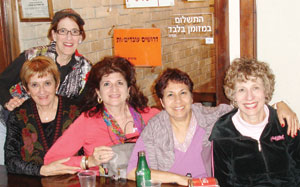 HOLY COINCIDENCES — It was a week of chance meetings for Devra Lerner when she recently travelled to Israel for her niece’s Bat Mitzvah. As she checked into Beit Shmuel in Jerusalem, the first person she ran into was Jonathan Edelman, who was just leaving Israel to return to Kansas City for his cousin Leah Sosland’s Bat Mitzvah.
HOLY COINCIDENCES — It was a week of chance meetings for Devra Lerner when she recently travelled to Israel for her niece’s Bat Mitzvah. As she checked into Beit Shmuel in Jerusalem, the first person she ran into was Jonathan Edelman, who was just leaving Israel to return to Kansas City for his cousin Leah Sosland’s Bat Mitzvah. 


 F
F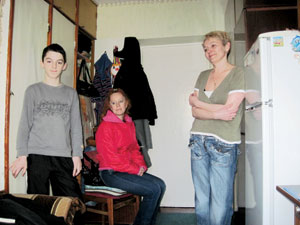 A new standing committee was established to bring together a select group of Jewish communal leaders from across the country to discuss the best ways to strengthen and build the Jewish community both nationally and throughout the world. The Jewish Federation of Greater Kansas City has been invited to join this conversation, and has now taken a seat at what is known as the Jewish Federations of North America’s (JFNA) Global Planning Table (GPT).
A new standing committee was established to bring together a select group of Jewish communal leaders from across the country to discuss the best ways to strengthen and build the Jewish community both nationally and throughout the world. The Jewish Federation of Greater Kansas City has been invited to join this conversation, and has now taken a seat at what is known as the Jewish Federations of North America’s (JFNA) Global Planning Table (GPT).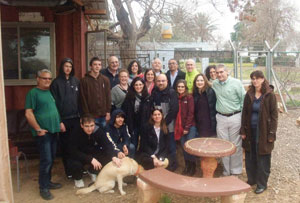 Kansas City raised $4.6 million through the annual campaign in 2011. Of that total, Stettner said Kansas City gave approximately 32 percent to Israel and overseas programs. An additional $1 million in supplemental campaigns was also raised in 2011 — that includes donations directed toward a specific special fund such as Joplin tornado relief or the PJ Library.
Kansas City raised $4.6 million through the annual campaign in 2011. Of that total, Stettner said Kansas City gave approximately 32 percent to Israel and overseas programs. An additional $1 million in supplemental campaigns was also raised in 2011 — that includes donations directed toward a specific special fund such as Joplin tornado relief or the PJ Library. 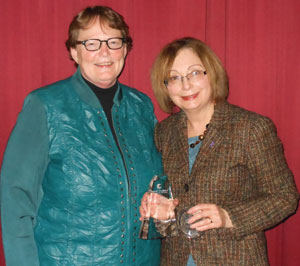 Sharon Katz, SAFEHOME executive director, received the Juliene Maska Advocate of the Year Award from the Kansas Coalition Against Sexual and Domestic Violence (KCSDV) during its ninth annual Safe Homes, Safe Streets reception in Topeka on Feb. 8.
Sharon Katz, SAFEHOME executive director, received the Juliene Maska Advocate of the Year Award from the Kansas Coalition Against Sexual and Domestic Violence (KCSDV) during its ninth annual Safe Homes, Safe Streets reception in Topeka on Feb. 8.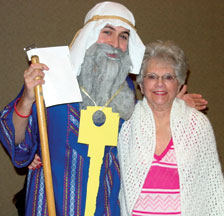 For the second year in a row, Conservative Congregations Beth Shalom and Ohev Sholom will celebrate Purim together. New this year is the location, and the addition Congregation Kol Ami.
For the second year in a row, Conservative Congregations Beth Shalom and Ohev Sholom will celebrate Purim together. New this year is the location, and the addition Congregation Kol Ami. Michael Davidson is not your typical yeshivah student in Israel. Michael says he studies as much as any other yeshivah student but most don’t take the time to do much exercise. Davidson has been running since June, preparing to run in the March 16 Team Lifeline Israel marathon.
Michael Davidson is not your typical yeshivah student in Israel. Michael says he studies as much as any other yeshivah student but most don’t take the time to do much exercise. Davidson has been running since June, preparing to run in the March 16 Team Lifeline Israel marathon. One of the most popular customs for Purim is to drown out the name of the villain, Haman, with a noisemaker. In Hebrew, the noisemaker is called a ra’ashan; in Yiddish, it is a gragger.
One of the most popular customs for Purim is to drown out the name of the villain, Haman, with a noisemaker. In Hebrew, the noisemaker is called a ra’ashan; in Yiddish, it is a gragger.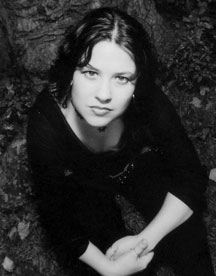 Neshama Carlebach, soul singer and leading superstar in Jewish entertainment will take the stage at 7 p.m. Thursday, March 8, at the White Theatre. Joining Carlebach at Congregation Beth Shalom’s Polsky Concert will be Rev. Roger Hambrick and members of the Green Pastures Baptist Church Choir. The 90-minute concert, which is free and open to the community, will be performed without intermission.
Neshama Carlebach, soul singer and leading superstar in Jewish entertainment will take the stage at 7 p.m. Thursday, March 8, at the White Theatre. Joining Carlebach at Congregation Beth Shalom’s Polsky Concert will be Rev. Roger Hambrick and members of the Green Pastures Baptist Church Choir. The 90-minute concert, which is free and open to the community, will be performed without intermission. ‘NEW’ NIGUN — After what it terms a “too long hiatus,” The Nigun Orchestra is back with a new name, the ‘Nu’ Nigun Orchestra. Its next gig with new featured singer Rabbi Simcha Morgenstern will take place March 8 at the Torah Learning Center. Joining Rabbi Morgenstern are Steve Max on clarinet, Leslie and Jerry Pollock playing piano and drums, Rick Huyett on bass and Mel Prezant, the trumpeter who also serves as the orchestra’s director. The Purim party will begin with Megillah reading at 5 p.m. followed by the celebration at 5:30 p.m. Cost for the event is $20 for adults and $10 for children (11 and under) or $60 per family. To register call 913-890-3811 or visit purimshtetl.eventbrite.com.
‘NEW’ NIGUN — After what it terms a “too long hiatus,” The Nigun Orchestra is back with a new name, the ‘Nu’ Nigun Orchestra. Its next gig with new featured singer Rabbi Simcha Morgenstern will take place March 8 at the Torah Learning Center. Joining Rabbi Morgenstern are Steve Max on clarinet, Leslie and Jerry Pollock playing piano and drums, Rick Huyett on bass and Mel Prezant, the trumpeter who also serves as the orchestra’s director. The Purim party will begin with Megillah reading at 5 p.m. followed by the celebration at 5:30 p.m. Cost for the event is $20 for adults and $10 for children (11 and under) or $60 per family. To register call 913-890-3811 or visit purimshtetl.eventbrite.com. LITERARY TEENS — Two Jewish teens — Shawnee Mission East junior Rachel Franklin and University of Kansas freshman Blaire Ginsburg — are among those featured in the latest edition of elementia, the Johnson County Library’s teen literary magazine. Rachel, a member of The Temple, Congregation B’nai Jehudah and the daughter of Renee and Phil Franklin, has been published several times in the magazine. She wrote two free verse poems that are published in this issue — “The Parasite Lives and Grows” and “The Difference Between Simile and Self-Medication.” Blaire is the daughter of Byron and Gerri Lyn Ginsburg. This is the second time she’s been published in elementia. She also has two poems published in this issue, “Story of the Stone” and “Who We Are” She is a member of Congregation Beth Shalom and active in KU Hillel. Eight issues of elementia have been published since the fall 2005. Those ages 12-20 are eligible to submit original prose, poetry and illustrations for elementia. Content of the first eight issues is available at www.jocoteenscene.org/elementia. For more information about elementia, or programs for teens call (913) 826-4600.
LITERARY TEENS — Two Jewish teens — Shawnee Mission East junior Rachel Franklin and University of Kansas freshman Blaire Ginsburg — are among those featured in the latest edition of elementia, the Johnson County Library’s teen literary magazine. Rachel, a member of The Temple, Congregation B’nai Jehudah and the daughter of Renee and Phil Franklin, has been published several times in the magazine. She wrote two free verse poems that are published in this issue — “The Parasite Lives and Grows” and “The Difference Between Simile and Self-Medication.” Blaire is the daughter of Byron and Gerri Lyn Ginsburg. This is the second time she’s been published in elementia. She also has two poems published in this issue, “Story of the Stone” and “Who We Are” She is a member of Congregation Beth Shalom and active in KU Hillel. Eight issues of elementia have been published since the fall 2005. Those ages 12-20 are eligible to submit original prose, poetry and illustrations for elementia. Content of the first eight issues is available at www.jocoteenscene.org/elementia. For more information about elementia, or programs for teens call (913) 826-4600.  A rivalry between two schools in the Blue Valley School District has turned into a controversy over what is good clean fun and what is anti-Semitism. On Jan. 27, Blue Valley Northwest students performed a skit pre-approved by school officials that some Jewish students at BV North believe was anti-Semitic. Three weeks later the controversial skit was aired on television. Following the broadcasts social media sites, including Facebook, exploded with public comments.
A rivalry between two schools in the Blue Valley School District has turned into a controversy over what is good clean fun and what is anti-Semitism. On Jan. 27, Blue Valley Northwest students performed a skit pre-approved by school officials that some Jewish students at BV North believe was anti-Semitic. Three weeks later the controversial skit was aired on television. Following the broadcasts social media sites, including Facebook, exploded with public comments. The situation was really becoming a hot topic last Wednesday night and spurred a discussion in a class taught by Rabbi Vered Harris at Congregation Beth Torah. The class includes students at a variety of schools, not just BVN and BVNW.
The situation was really becoming a hot topic last Wednesday night and spurred a discussion in a class taught by Rabbi Vered Harris at Congregation Beth Torah. The class includes students at a variety of schools, not just BVN and BVNW. At least two other rabbis have commented publicly about the matter. Rabbi Alan Cohen, interim rabbi at Congregation Beth Shalom, said in a KSHB news story Thursday, Feb. 16, that he believes the dance was meant to be light hearted.
At least two other rabbis have commented publicly about the matter. Rabbi Alan Cohen, interim rabbi at Congregation Beth Shalom, said in a KSHB news story Thursday, Feb. 16, that he believes the dance was meant to be light hearted.